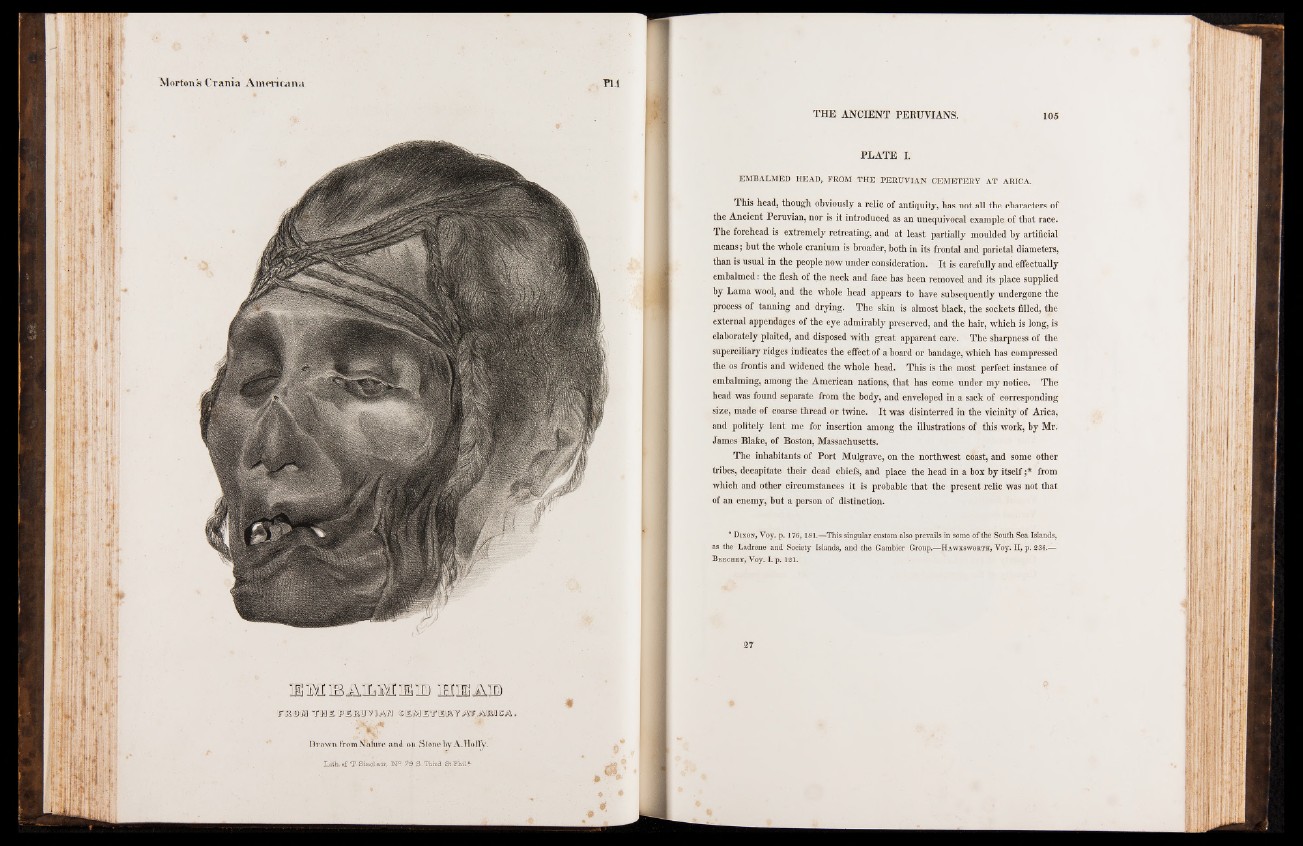
ton r a m m< n c
IffimIBiilLMlEID TEEHAln)
iQDKfi 5ÜSBQ11 IP 3BH B& iN f -HS^l[1 tTH IlE w Al>.ASiQ(SA
Drawn from Nature a n a oil Stone w A H o ffv
L ith .o £ 1>. S in c la ir , 1ST? 79 S - T H r ä S t-TM l^
PLATE m
EMBALMED HEAD, FROM THE PERUVIAN CEMETERY AT ARICA.
This head, though obviously a relic of antiquity, has not all the characters of
the Ancient Peruvian, nor is it introduced as an unequivocal example of that race.
The forehead is extremely retreating, and at least partially moulded by artificial
means; hut the whole cranium is broader, both in its frontal and parietal diameters,
than is usual in the people now under consideration. It is carefully and effectually
embalmed: the flesh of the neck and face has been removed and its place supplied
by Lama wool, and the whole head appears to have subsequently undergone the
process of tanning and drying. The skin is almost black, the sockets filled, the
external appendages of the eye admirably preserved, and the hair, which is long, is
elaborately plaited, and disposed with great apparent care. The sharpness of the
superciliary ridges indicates the effect of a board or bandage, which has compressed
the os frontis and widened the whole head. This is the most perfect instance of
embalming, among the American nations, that has come under my notice. The
head was found separate from the body, and enveloped in a sack of corresponding
size, made of coarse thread or twine. It was disinterred in the vicinity of Arica,
and politely lent me for insertion among the illustrations of this work, by Mr.
James Blake, of Boston, Massachusetts.
The inhabitants of Port Mulgrave, on the northwest coast, and some other
tribes, decapitate their dead chiefs, and place the head in a box by itself ;* from
which and other circumstances it is probable that the present relic was not that
of an enemy, but a person of distinction.
* Dixon, Voy. p. 176,181.—This singular custom also prevails in some of the South Sea Islands,
as the Ladrone and Society Islands, and the Gambier Group.—Hawksworth, Voy. II, p. 236.—
Beechey, Voy. I. p. 121.